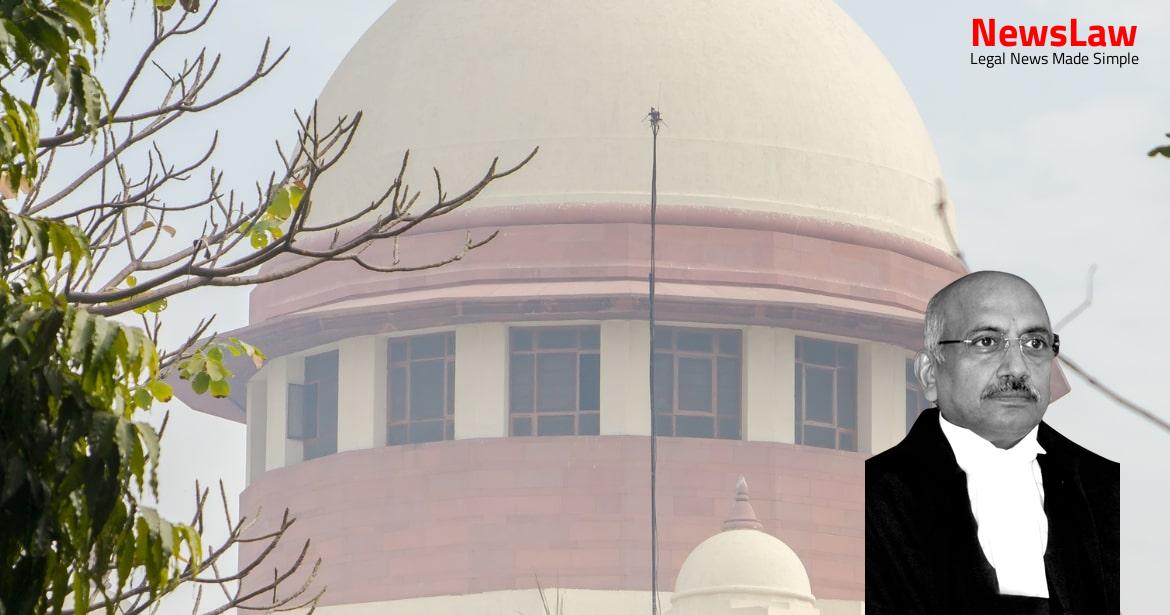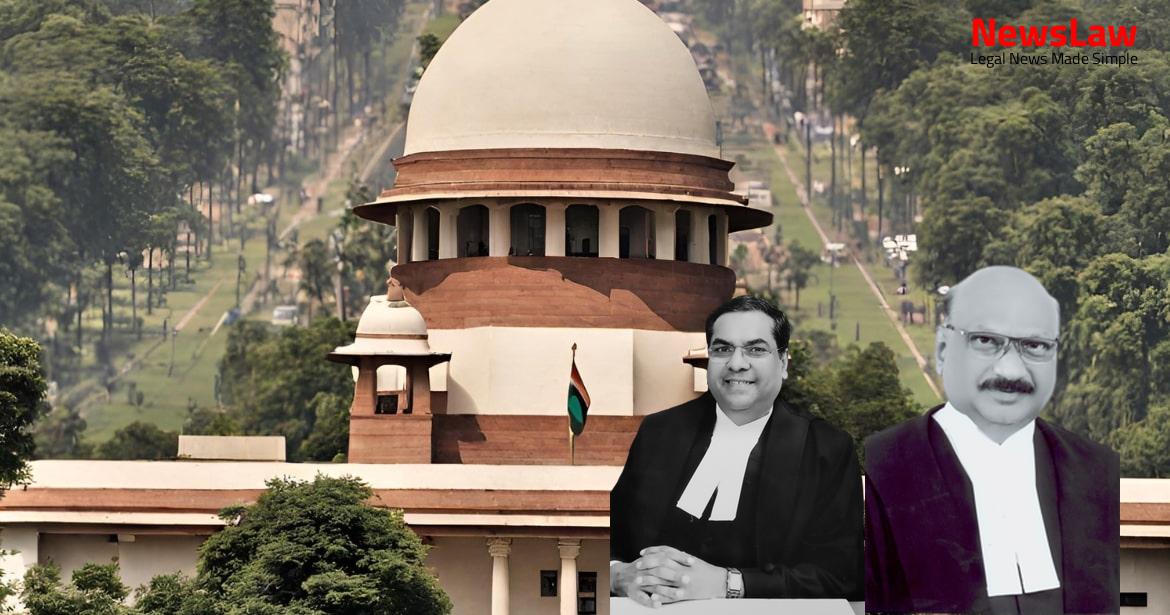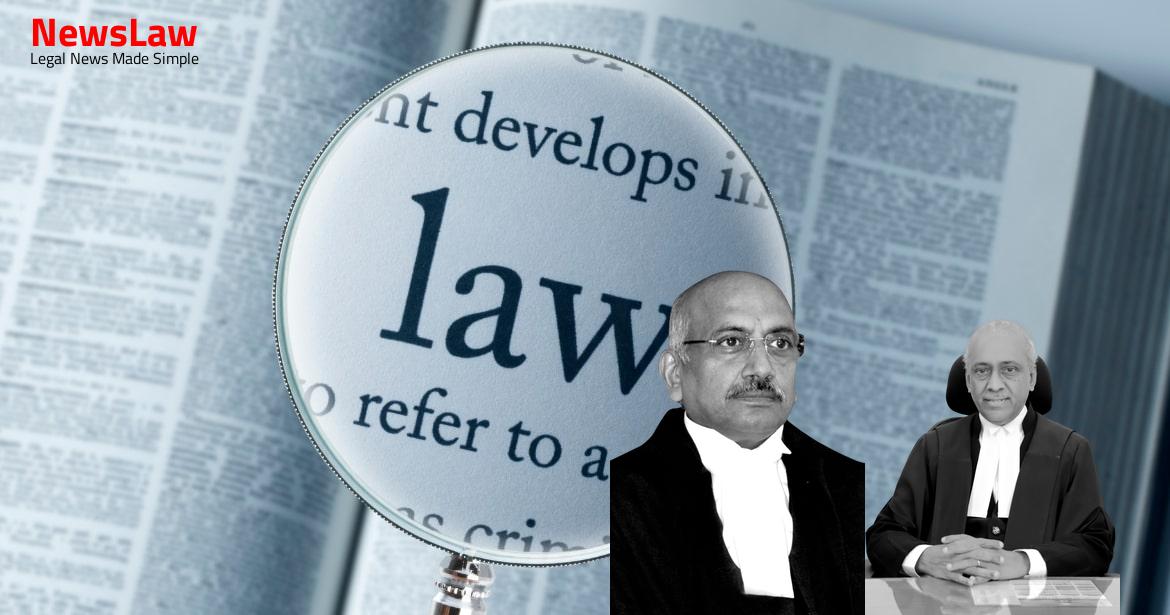Delve into the intricate legal analysis conducted by the court regarding the existence of a dispute in an Insolvency and Bankruptcy Code application. The court’s examination focuses on ensuring genuine disputes are considered before initiating the insolvency resolution process, emphasizing the need for plausible contentions. Various legal interpretations from high courts offer guidance on determining the authenticity of disputes, maintaining a rigorous standard to prevent premature insolvency resolutions. Let’s uncover the nuances of legal reasoning in resolving complex commercial disputes.
Facts
- Tripartite Agreement executed between Kay Bouvet, Overseas, and Mashkour for designing, engineering, etc. for Mashkour Sugar Company
- Disputes arose regarding exchange rate payment
- Demand Notice under Section 8 of IBC served on Kay Bouvet by Overseas
- Agreement between Mashkour and Kay Bouvet informed to Ministry of External Affairs
- Advance payment received by Kay Bouvet from Overseas adjusted under a new agreement
- Appeal made by Overseas before NCLAT and Bombay High Court
- Termination of contract and adjustment of advance payment informed to Kay Bouvet
- Communication between Ministry of External Affairs, GoI, and Sudan Government
- Appointment of Kay Bouvet as Contractor by Sudan Government advised
- Various agreements and communications regarding financing of Mashkour Project
Also Read: Presumption of Genuine Endorsements in Cheque Case
Arguments
- Kay Bouvet argues that Overseas cannot be considered an ‘Operational Creditor’ under the IBC.
- The NCLAT is accused of misconstruing provisions and allowing the appeal of Overseas.
- The jurisdiction of adjudicating authorities under the IBC is said to be limited.
- Overseas does not have any amount receivable from Kay Bouvet for goods, services, employment, or debt, hence not fitting the definition of ‘Operational Debt’.
- It is pointed out that Overseas should not fall under the definition of ‘Operational Creditor’.
- The payment made to Kay Bouvet by Overseas was actually from the amount received from Mashkour, supported by evidence on record.
- Elaborate submissions made on behalf of both parties.
- Shri C.A. Sundaram asserts that amount paid to Kay Bouvet was from Overseas funds, not Mashkour.
- Submission that the appeal should be dismissed.
- Kay Bouvet admitted to receiving the amount from Overseas.
- Claim falls under ‘Operational Debt’ as per Section 5(21) of the IBC.
- NCLAT considered provisions and allowed Overseas’ appeal for Section 9 petition admission.
Also Read: Medical Negligence and Compensation: A Landmark Decision
Analysis
- The Corporate Debtor admitted in its reply that Mashkour appointed it as the EPC Contractor for the project, thereby vitiating the tri-partite contract
- The fresh contract executed between Mashkour and the Corporate Debtor supersedes the tri-partite contract dated 18 April 2010
- The Corporate Debtor is liable to refund the advance amount to the Operational Creditor as per the admission in its reply
- The amount of Rs.47,12,10,000 was paid to Kay Bouvet on behalf of Mashkour from funds released to Overseas by Exim Bank
- The termination of the contract with Overseas does not create any debt due from Kay Bouvet towards OIA
- Kay Bouvet presented the existence of dispute to oppose the demand made by Overseas
- The IBC aims to prevent premature insolvency resolution due to operational debts, ensuring genuine disputes are considered before initiation of the process
- The Court’s role at this stage is to determine the plausibility of the dispute and reject spurious defenses
- The communication between Overseas, Mashkour, and Kay Bouvet sheds light on the contractual arrangements and payments involved in the project
- The operational creditor must submit specific documents along with the application, including a copy of the invoice or demand notice, an affidavit confirming no dispute, and certificates from financial institutions.
- The operational creditor can propose a resolution professional for the insolvency process.
- The Adjudicating Authority must make a decision within fourteen days of receiving the application, based on criteria like completeness of application and non-payment of debt.
- The Adjudicating Authority can admit or reject the application based on specific conditions, and must notify both the operational creditor and the corporate debtor.
- If the application is rejected based on incomplete information, the applicant is given a chance to rectify the defect within seven days.
- The corporate insolvency resolution process officially begins on the date of admission of the application.
- The test enunciated by Beazley, J. in Scanhill Pty Ltd. v. Century 21 Australasia Pty Ltd. sets a high threshold for proving a genuine dispute.
- Lockhart, J. in Chadwick Industries (South Coast) Pty Ltd. v. Condensing Vaporisers Pty Ltd. emphasized that the court’s satisfaction requirement is not particularly high.
- Various formulations from different cases provide guidance in determining a genuine dispute, as long as they do not replace the statutory language.
- The court’s role is not to determine the merits of a dispute but to ascertain if a genuine dispute exists based on plausible contentions.
- The word ‘genuine dispute’ indicates that the court must ensure the dispute is not frivolous or vexatious and that some substance underlies the claim.
- Judgments from Australian High Court and the UK Chancery Division shed light on the meaning of ‘existence of a dispute’ in the legal context.
- The explanation of ‘genuine dispute’ given by McLelland, C.J. in Eq suggests a plausible contention requiring investigation, similar to the ‘serious question to be tried’ criterion for injunctions.
- The court’s task is to assess whether a dispute is real, non-spurious, and not misconceived, without deciding the ultimate success of the claim.
- The court should reject an application under IBC Section 9(5)(ii)(d) if a notice of dispute has been received, indicating the need for the existence of a genuine dispute to be communicated.
- The court’s examination is limited to determining the presence of a genuine dispute and claim, without delving into the merits of the dispute.
- NCLT rightly rejected the application of Overseas due to the existence of a dispute between Kay Bouvet and Overseas.
- An order under Section 9 of the IBC would not have been passed in the given circumstances.
- NCLAT misinterpreted the factual and legal position and erred in reversing the order of NCLT, directing the admission of the Section 9 petition.
Also Read: Remand of Writ Petition for Restoration and Decision on Merits
Decision
- Order passed by NCLT dated 26 July 2018 is maintained.
- All pending IAs stand disposed of.
- Appeal is allowed and the impugned order dated 21 December 2018, passed by NCLAT is quashed and set aside.
Case Title: KAY BOUVET ENGINEERING LTD. Vs. OVERSEAS INFRASTRUCTURE ALLIANCE (INDIA) PRIVATE LIMITED (2021 INSC 394)
Case Number: C.A. No.-001137 / 2019



